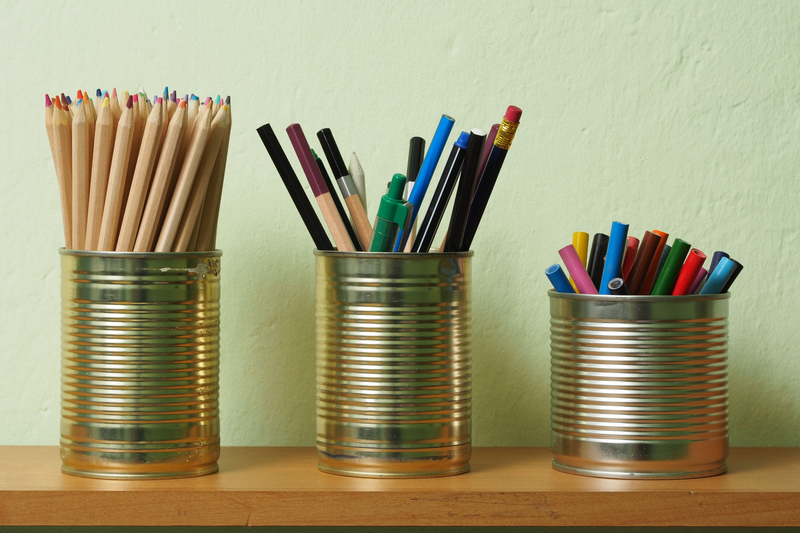Ensuring PPE Waste Doesn't Endanger Others: A Comprehensive Guide
The COVID-19 pandemic and increased awareness of airborne illnesses have made personal protective equipment (PPE) a daily necessity for millions of people. While face masks, gloves, and face shields provide essential protection, concerns are growing over the environmental and health risks associated with PPE waste if not properly managed. Ensuring PPE waste disposal doesn't endanger others is crucial for both public safety and the environment.
Why Proper PPE Waste Disposal Is Essential
Improperly discarded PPE can harbor pathogens, transmit infections, and harm wildlife. Masks and gloves often end up on streets, parks, beaches, or water bodies, contributing to pollution and posing risks to sanitation workers and the public. The following are compelling reasons why safe PPE waste management is vital:
- Preventing disease transmission: Used PPE can carry viruses, bacteria, and other pathogens long after disposal.
- Protecting wildlife and ecosystems: Masks and gloves breaking down in nature can entangle animals and leach harmful chemicals.
- Reducing microplastic pollution: Disposable PPE, mostly made from plastics, degrades into microplastics contaminating food chains and water sources.
- Ensuring worker safety: Sanitation and recycling workers face higher risks when handling improperly sorted PPE waste.
Types of PPE Waste and Associated Risks
Understanding what constitutes PPE waste helps in identifying proper disposal methods. Common items include:
- Single-use face masks (surgical masks, N95, KN95)
- Disposable gloves (latex, nitrile, vinyl)
- Face shields and goggles
- Protective gowns and coveralls
- Shoe covers and head covers
Risks associated with PPE waste:
- Disease transmission: Infectious agents can survive on PPE surfaces for hours or days.
- Blockage of sewage systems: Discarding PPE in toilets can clog plumbing and municipal water systems.
- Environmental pollution: Littered PPE adds to land and marine pollution, posing threats to ecosystems.
- Harm to animals: Wildlife may ingest or become entangled in discarded PPE.

PPE Waste Management: Best Practices For Safety
1. Individual Responsibility: How to Dispose of PPE Correctly
As individuals, we play a pivotal role in keeping PPE waste from endangering others. The following best practices should be followed when disposing of used masks, gloves, or other PPE items:
- Never litter PPE: Always place used items in a trash bin. If a bin is not available, carry a small disposable bag to store used PPE until you can discard it properly.
- Do not flush PPE down toilets: Disposable masks and gloves should never be flushed as they cause blockages and can enter water systems.
- Seal contaminated PPE: When disposing of PPE that may be contaminated (after visiting a hospital or caring for a sick person), seal it in a strong plastic bag before placing it in the trash.
- Wash hands: After disposing of PPE, wash hands thoroughly with soap and water or use hand sanitizer.
- Do not recycle disposable PPE: Most single-use PPE is not recyclable through regular household recycling systems due to contamination and material composition.
2. Community and Workplace Solutions for PPE Waste Management
Institutions, businesses, and communities can implement PPE waste mitigation strategies to protect public health. These approaches include:
- Dedicated PPE waste bins: Installing special bins, clearly marked and separate from regular trash cans, helps remind people to dispose of PPE responsibly.
- Signage and education: Use visible signs to educate visitors and employees about the dangers of improper PPE disposal.
- Collection programs: Some organizations partner with specialized recycling or waste management companies to collect and treat PPE waste.
- Encourage reusable PPE: Promote the use of cloth masks or washable face shields when feasible, reducing overall waste.
Innovative Solutions: Reducing the Impact of PPE Waste
Biodegradable and Eco-Friendly PPE
One of the most promising approaches to ensuring PPE waste doesn't endanger others is the development and adoption of biodegradable PPE products. These alternatives degrade faster, causing less environmental harm.
- Bioplastics: Face masks, gloves, and gowns made from cornstarch or other plant-based materials break down more easily in the environment.
- Reusable PPE: High-quality reusable masks, shields, and gowns can be sanitized and reused multiple times, lessening the waste burden.
- Recycling drives: Some companies have developed systems to collect and recycle PPE by using advanced sterilization and separation technology.
Supporting innovations in PPE materials and participating in recycling programs can greatly reduce the health and ecological risks associated with PPE waste.
Governmental and Organizational Policies
Governments and public health agencies have a responsibility to set guidelines and create systems that safely manage PPE waste. Effective policies include:
- Clear classification of PPE as hazardous waste: Especially in healthcare and quarantine contexts, PPE should be treated as infectious biomedical waste and handled accordingly.
- Mandatory PPE collection bins in public spaces: Busy venues like airports, hospitals, schools, and shopping centers must provide accessible bins for safe PPE disposal.
- Adoption of waste-to-energy solutions: Incineration technologies designed to minimize emissions can be used to destroy contaminated PPE, converting waste to energy.
- Support for research and innovation: Funding efforts focused on developing compostable PPE or highly efficient recycling methods.
Best Practices for Safe PPE Waste Handling: Protecting Public Health & the Environment
For Individuals at Home
- Separate PPE waste: Where possible, keep used PPE apart from other household trash, especially if there are vulnerable people at home.
- Double-bag method: Put used PPE in a bag, tie securely, and then place that bag inside another before discarding, especially when someone at home is ill.
- Do not put PPE in recycling: Even though masks and gloves resemble plastics, they contaminate recycling streams and are not processed by recycling facilities.
- Disinfect outside of the bag: If possible, lightly spray the outside of the PPE bag with a household disinfectant before putting it in the bin.
For Employers and Facility Managers
- Provide clear instructions: Post guidelines on how to properly dispose of PPE at entrances, exits, and common areas.
- Regular collection: Empty PPE waste bins frequently to avoid overflow and potential exposure risks.
- Protect cleaning staff: Equip janitorial and waste workers with appropriate PPE and train them on handling potentially infected waste.
- Monitor and report: Keep records on PPE waste volumes and report unusual spikes, as they may indicate an outbreak or non-compliance with disposal rules.
For Healthcare Settings
- Strict segregation: Use color-coded bins and bags to distinguish between contaminated and non-contaminated PPE.
- Specialized waste treatment: Autoclave or incinerate contaminated PPE in accordance with local healthcare regulations to neutralize pathogens.
- Comprehensive training: Regularly train clinical and non-clinical staff in infection control and waste handling procedures.
- Regular audits: Review waste disposal practices periodically to ensure compliance.
Common PPE Waste Disposal Mistakes To Avoid
- Tossing PPE on the ground: Littered PPE not only endangers wildlife and pollutes the environment but increases the risk of spreading infection to others.
- Putting PPE in recycling bins: As previously highlighted, most curbside recycling programs cannot accept PPE.
- Improperly sealing PPE waste bags: Leaving bags open can expose garbage handlers and increase the likelihood of contamination spread.
- Reusing disposable PPE: Single-use items should not be worn again; they lose effectiveness and are more likely to harbor pathogens.
Building a Culture of Safe PPE Waste Management
At the core of ensuring PPE waste does not endanger others is building awareness and fostering responsibility across all levels of society. Here's how we can all contribute:
- Education and advocacy: Schools, workplaces, and community groups should regularly share correct PPE disposal methods and the risks of improper disposal.
- Public campaigns: Use media and signage to highlight the environmental and health impacts of PPE littering.
- Individual accountability: Everyone must understand their role in keeping public spaces clean and safe by following PPE waste protocols.
- Innovation and support: Support organizations that work on creating sustainable PPE solutions or manage collection and recycling programs effectively.
Remember, every action counts. Properly disposing of your used mask or gloves protects not only you, but also neighbors, essential workers, and the planet's fragile ecosystems.

The Future of PPE Waste Management: Trends and Outlook
With the heightened recognition of PPE waste dangers, new technologies, and systems are emerging:
- PPE-specific recycling machines: Some firms are pioneering devices that sterilize and recycle masks and gloves into raw materials for new products.
- Compostable PPE: R&D in bio-based, compostable PPE promises solutions that significantly reduce environmental impact upon disposal.
- Government incentives: Local and national governments may soon offer incentives for sustainable PPE production and responsible disposal.
As these innovations develop, the key is continued vigilance in PPE waste management--including proper sorting, disposal, and support of sustainable alternatives.
Conclusion: Together, We Can Ensure PPE Waste Doesn't Harm Others
Ensuring PPE waste is handled safely requires a combination of personal responsibility, community initiatives, and policy interventions. Littered masks and gloves are not just unsightly--they present real dangers to people, essential workers, and the environment.
By following correct disposal practices, advocating for better waste management systems, and supporting innovations in sustainable PPE, we can substantially reduce the risks. This collective effort will help keep our communities healthy, our environment clean, and ensure that the PPE protecting us today does not become tomorrow's threat.
Let's make ensuring PPE waste doesn't endanger others a priority for all.
```